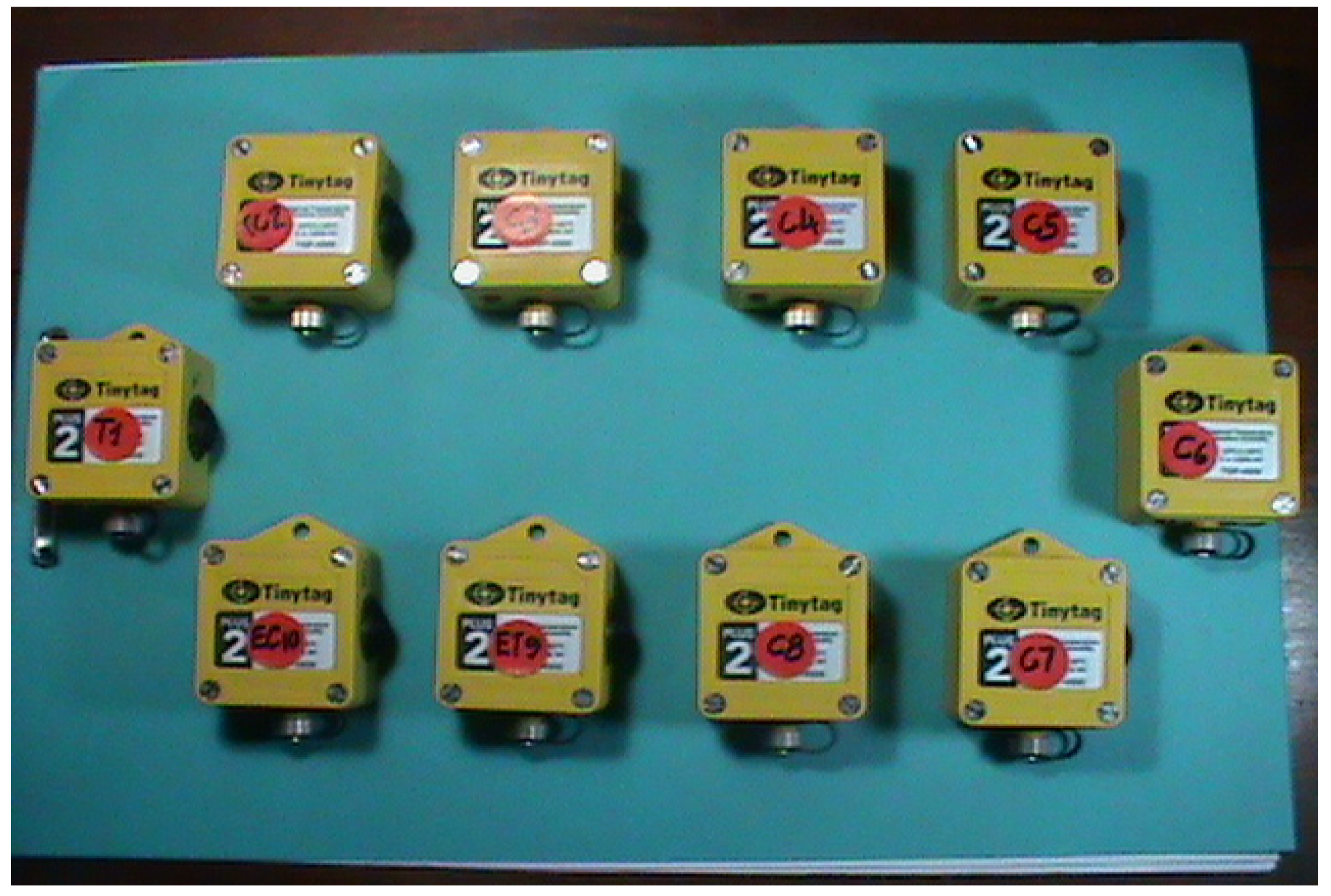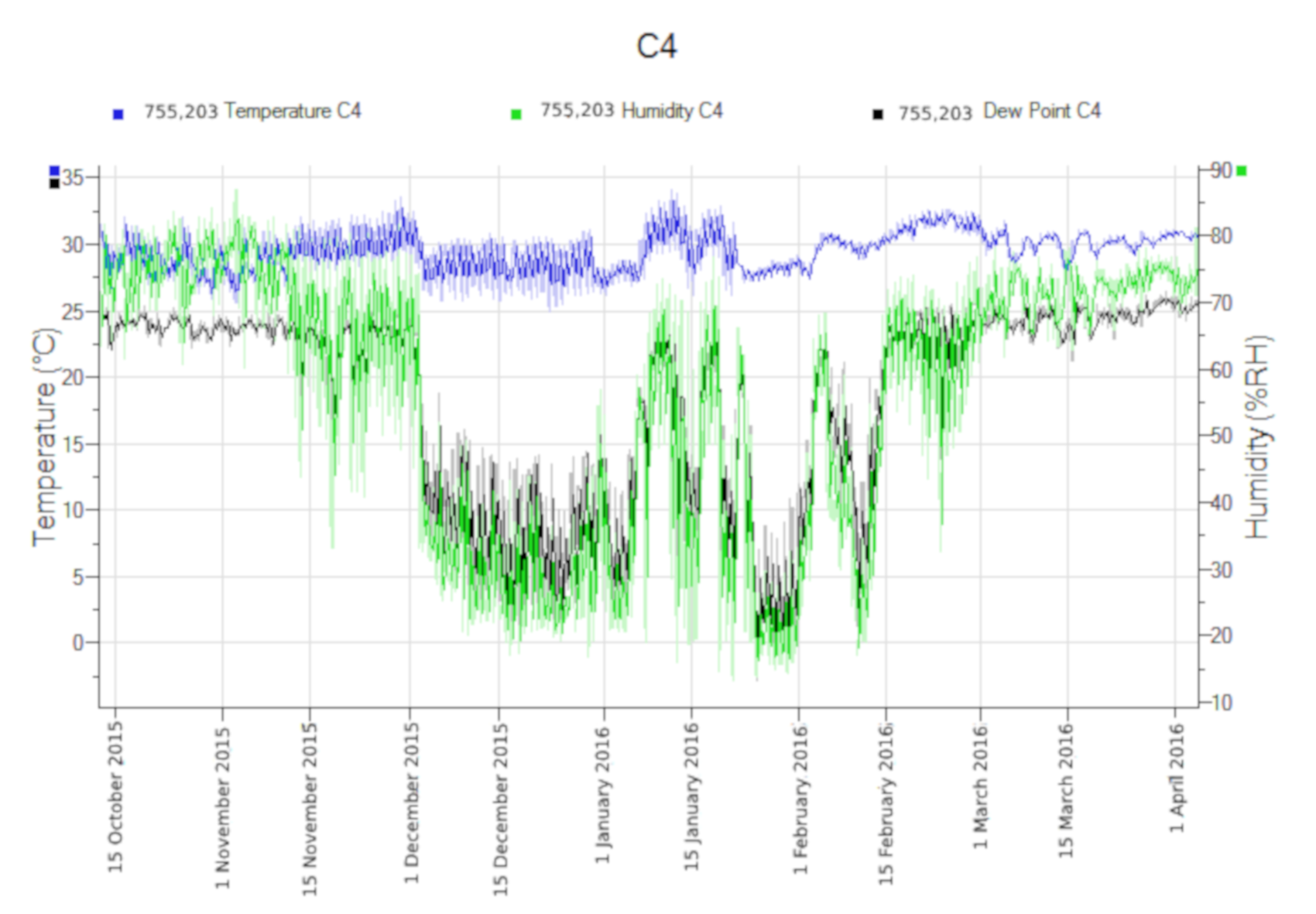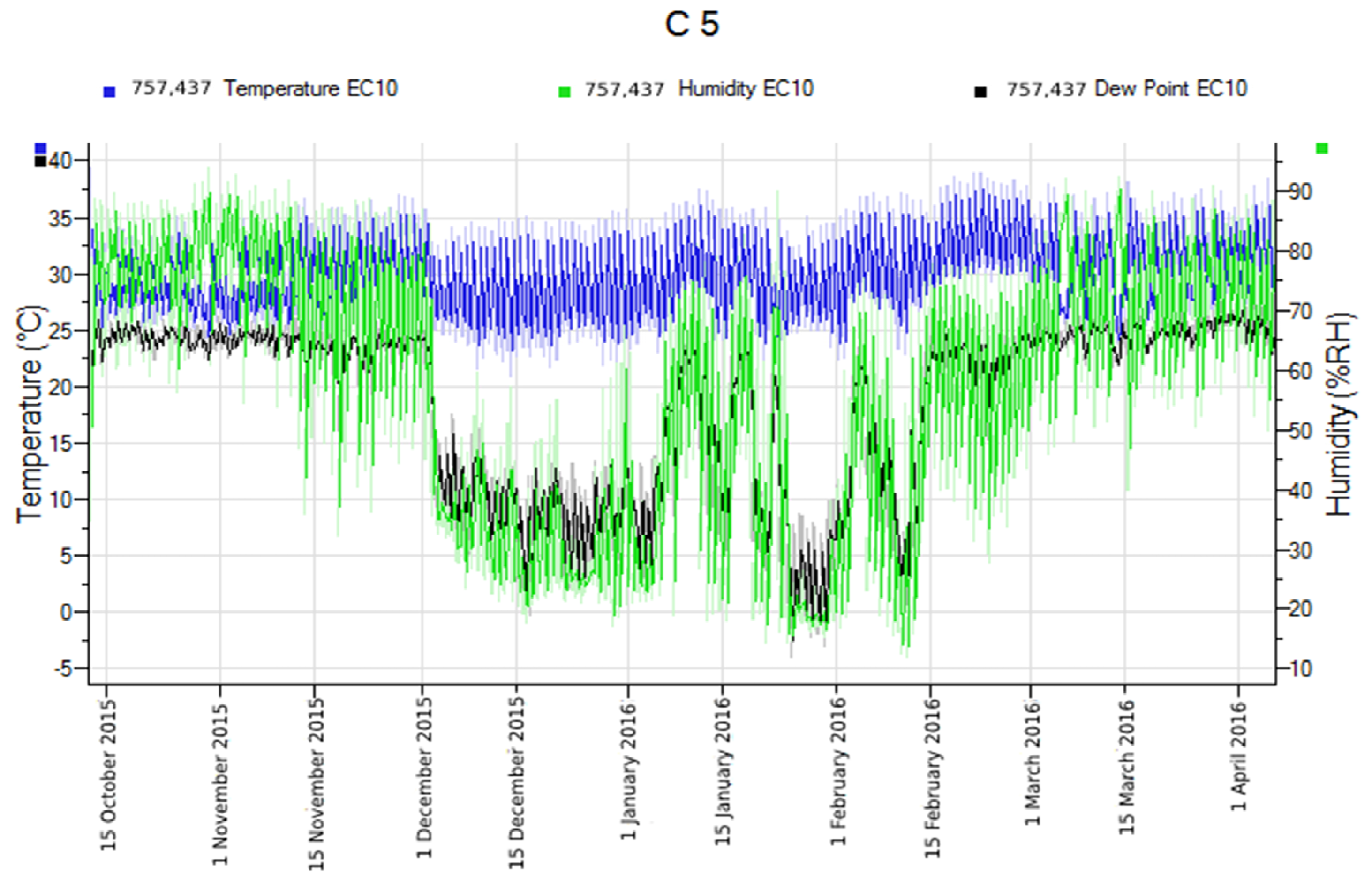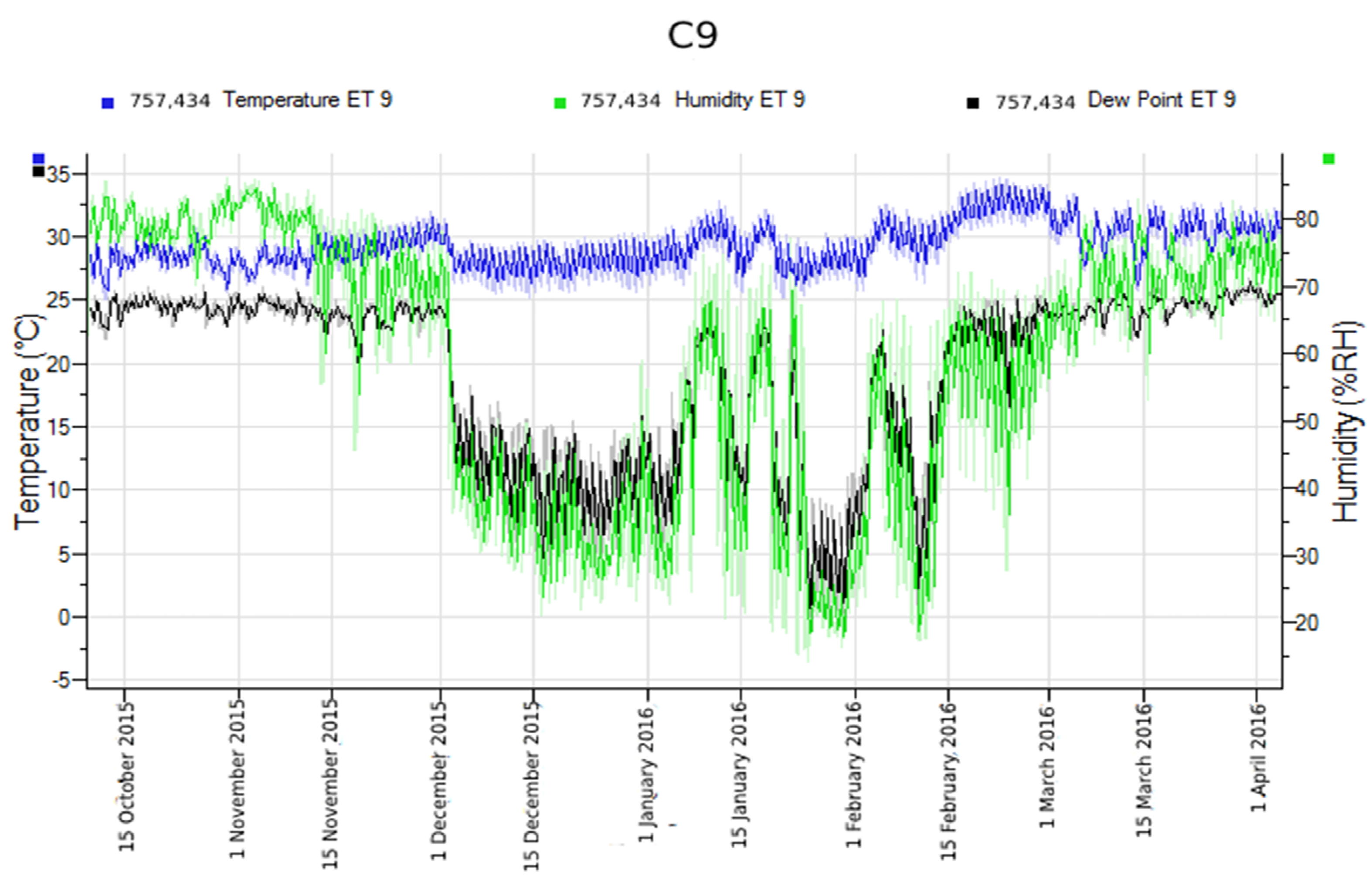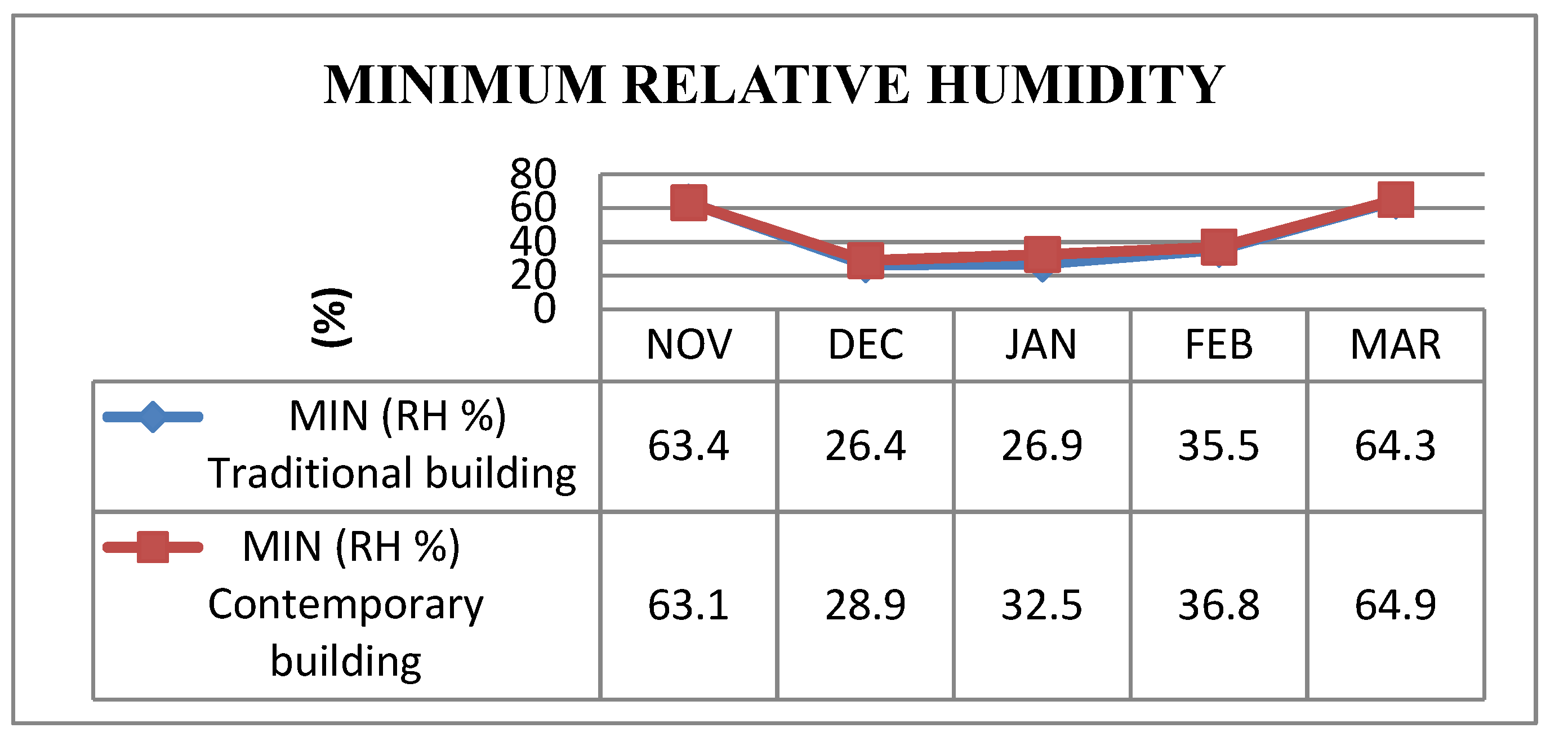1. Introduction
The global commitment to achieving a carbon neutral society has continued to resonate in contemporary developmental discourse [
1]. This is evident in the outcomes emanating from the recently concluded United Nations Framework Convention on Climate Change (UNFCC) Conference of Parties (COP)26 international climate conference [
1,
2]. At this summit, commitments were made toward securing a net zero regime by the middle of the current century whilst maintaining a maximum of 1.5 °C degrees of warming [
2]. The operationalization of these commitments toward achieving carbon neutrality have been outlined through two notable outcomes, namely, the Glasgow Climate Pact and the Paris Rulebook [
1,
2,
3].
The contribution of the built environment to the achievement of this mandate has been elucidated by various scholars [
4,
5,
6]. For instance, Wang et al. [
4] admitted that the Chinese construction industry was responsible for 51.3% of the entirety of carbon emissions in that country in 2018, with an estimated 21.9% emanating from building operations whilst the construction process accounted for 42.87%. Similarly, Gan et al. [
7] maintained that the construction industry was responsible for 30% of the greenhouse gas emissions. Furthermore, they averred that an estimated 40% of the global energy consumption could be attributed to the sector [
7]. Impliedly, the building sector requires considerable improvement to enhance its potential to contribute toward carbon neutrality. This understanding has culminated in the increasing interest of various scholars over the past decade on built environment-related facets influencing this potential [
4,
7,
8,
9,
10,
11].
The extant literature has continued to reiterate the nexus between thermal comfort and the wellbeing of human beings [
12,
13,
14,
15,
16], sustainable development [
17,
18,
19], and green building development [
15], among other facets. Such sustained levels of interest among the research and practitioner communities concerning thermal comfort have been attributed to its potential to engender improved sustainability performance of contemporary society, tackling, as it were, challenges such as unsustainable energy consumption patterns [
20,
21] urban poverty, energy poverty [
22,
23], low levels of productivity [
24,
25,
26,
27,
28], and above all, global warming [
29,
30].
The drive for improved levels of thermal comfort in the built environment has seemed to further delineate among scholars as it concerns indoor thermal comfort and outdoor thermal comfort [
31,
32]. Additionally, extant studies have sought to further dichotomize the inquiry into the phenomenon of the nature of buildings by comparing traditional (vernacular) and modern (contemporary) buildings [
33,
34]. Others have focused on thermal comfort across contexts in places experiencing different climatic conditions such as temperate, tropical, and warm, humid climates, among others [
35,
36,
37,
38]. This study belongs to the class of studies seeking to understand the variance in thermal comfort between traditional and modern buildings situated in a warm, humid climate. Therefore, instances relating to the indoor and outdoor thermal comfort evaluation fall outside the study’s remit.
Available evidence points to the salient contribution of dwelling types to the degree of thermal comfort experienced therein [
39,
40] due to the nature of materials and the design. Al Rasbi and Gadi [
41] investigated the elements of traditional buildings in Oman which contributed toward improved levels of thermal comfort. They discovered that traditional structures may inform the successful harnessing of ambient energy sources for creating an artificial setting that is comfortable thermally [
41]. Malama and Sharples [
42] investigated the thermal performance of traditional Zambian dwellings during the cool season. These traditional structures proved to be uncomfortable during the cool season based on the empirical assessments. In the Libyan oasis of Ghadames, Ealiwa et al. [
43] evaluated the thermal comfort of traditional and contemporary buildings. Findings from their study highlighted that measurements of predicted mean vote (PMV) in new air-conditioned buildings demonstrated good comfort conditions [
43]. Dyvia and Arif [
44] describe PMV as an index which seeks to predict the mean value of votes of a group of occupants on a seven-point thermal sensation scale. It is used to discern the degree of thermal sensation felt by building occupants. In traditional buildings, however, identical measurements and survey findings revealed that, although a PMV based on measurements and the International Organization for Standardization (ISO, 7730:2005), which focuses on ergonomics of the thermal environment template, signified discomfort (hot), the inhabitants reported their contentment with the internal comfort conditions. Ealiwa et al. [
43] suggested that older buildings have a higher level of thermal comfort than newer buildings.
Akair and Banhidi [
45] carried out a thermal comfort study in three Libyan towns spanning two climate zones. According to their study, the thermal comfort temperature in Libya was calculated and determined using one of the following expressions:
Tc-Griffiths (C) is the comfort temperature calculated using the Griffiths method, Tc-Brager (C) is the comfort temperature discovered using the de Dear and Brager method, and To − Avg (C) is the monthly mean outdoor temperature.
For buildings with air conditioning and heating systems, the comfort temperature computed from the preceding equation must be used to set a variable interior temperature. The use of traditional passive solutions to minimize energy usage and carbon emissions in modern buildings was studied by Mahar et al. [
46]. The authors observed that in Pakistan, conventional passive approaches yielded a high degree of comfort for a longer length of time while lowering energy consumption [
46]. Shaeri et al. [
47] investigated the performance and thermal comfort of traditional buildings in Bushehr, Iran. The study found that without any mechanical systems, the performance of these old buildings was entirely sufficient. Huimei et al. [
48] employed the climate chamber approach to investigate thermal comfort in China’s hot, humid environment. They discovered that the PMV model and the two-node model, two of the globally renowned standards, were inapplicable in measuring thermal comfort in buildings situated in the country’s hot, humid climate regions. Using TRNSYS software, Khoukhi and Fezzioui [
49] investigated the thermal comfort design in traditional dwellings situated within Algeria’s hot, dry area. This modeling approach revealed that, save for the use of air conditioning in the summer, current average houses appear to be unsuitable for the desert environment. Priya et al. [
50] used data solely acquired from measurements to evaluate the thermal efficiency of traditional and contemporary buildings in Nagapattinam, Tamil Nadu, India. Traditional buildings were shown to be valuable markers of a proper architectural design response for future modern buildings [
50].
Few studies in Nigeria have made attempts at engendering a comparison between the internal thermal convenience characteristics of both traditional and modern buildings, particularly during the dry season. Nevertheless, based on the outcomes of the limited and dated research conducted across various regions of Nigeria, Ogunsote and Prucnal-Ogunsote [
51] advocated a comfort limit of 20–25 °C, utilizing Nigeria as an exemplar for determining the effective temperature index in the tropics. However, the restrictions associated with the study’s breadth and duration seemingly undermined the potency of its projected contributions. In another study focusing on the selection of a thermal index for architectural design in a Nigerian climate, Ogunsote and Prucnal-Ogunsote [
52] employed a mental evaluation examination to capture thermal pressure. The results from that study established that the Evans scale (lesser-known) was typically more precise [
52]. Akingbade [
53] studied the indoor thermal environment in the dry season, using 12 subjects residing in a hot, humid environment within Ibadan metropolis in Nigeria’s southwest region. The scholar discovered that during the hot season, residents of residential buildings were able to withstand greater temperatures within the comfort temperature range of 28 °C and 32 °C, with an ideal temperature of 29.5 °C [
53]. Moreso, to evaluate thermal comfort, Ogbonna and Harris [
54] used data from empirical measurements and subjective questionnaires eliciting the experiences of building occupants in Jos, Nigeria. The optimal operational temperature was a little over 26 °C, according to the results. Furthermore, Akande and Adebamowo [
55] conducted a field study throughout the dry and wet seasons to investigate the indoor thermal environment of residential buildings in Bauchi, in Nigeria’s northeastern region, in a hot, dry climate. The study’s findings revealed the need to review the principles underpinning the notion of thermal comfort and occupant adaptability in such climates [
55]. Eludoyin et al. [
56] investigated relative humidity, air temperature, and regionalization of thermal comfort and climate within the Nigerian context and discovered a variance in the degree of thermal comfort experienced across the country due to the inherent diverse climatic conditions existing therein. This has necessitated the use of several thermal indices for measuring thermal comfort. Nwalusi et al. [
57] deployed these indices in the study of thermal comfort in traditional buildings in Nsukka. Results from their study corroborated the findings by Akande and Adebamowo [
55], especially as it concerned the need to review the desired levels of thermal comfort and occupant adaptability.
In contributing to the growing corpus of relevant studies focusing on the assessment of indoor thermal comfort in Nigeria, this study reports on an evaluation of the indoor thermal comfort characteristics of traditional and modern buildings in Okigwe, Southeastern Nigeria, during the heat period. It is expected that the study’s findings would engender a rethink of the extant design standards toward enabling a thermally comfortable setting. Both tropical dry and tropical wet climatic conditions are prevalent in the study region (Okigwe, Imo State, Southeastern Nigeria). Therefore, the climate can be described as warm and humid, with seasons of drought and rain, little daily temperature change, and high temperatures and humidity. As a result, the research is limited to the influence on the thermal environment of relative humidity and air temperature as experienced in nine traditional and modern buildings. Additionally, the heat season begins in late October and runs until early March, with the beginning of December and end of February being the driest months. Thermal comfort remains a critical facet which has enjoyed considerable reportage in indoor environmental quality studies globally. This study seeks to extend the knowledge around this concept within the context of traditional and modern buildings situated in a warm, humid climate. As such, nonenvironmental factors such as air quality, acoustics, and lighting, as well as any physical, biological, or chemical space pollution that might influence human health or comfort, are excluded from this study.
4. Discussion
Dry season extreme values of the mean interior air temperature for traditional buildings were reported in the months of December 2015 and February 2016, according to this study. The lowest temperature was 24.50 °C, whereas the maximum was 28.50 °C. In December 2015 and February 2016, the dry season extreme values of the mean interior air temperature for modern buildings were also reported. The lowest temperature was 25.30 °C, whereas the maximum was 28.60 °C. In comparison, 0.8 °C was the seasonal difference in air temperature between traditional buildings (24.5 °C) and modern buildings (25.3 °C). This meant that traditional buildings’ dry season air temperature mean was 0.8 °C lower than that of the modern structures. Traditional buildings had the highest value of 28.5 °C, whereas modern buildings had the highest value of 28.5 °C. The seasonal difference between the peak air temperature values of traditional (28.5 °C) and modern (28.6 °C) buildings was 0.1 °C. This also meant that traditional buildings’ dry season air temperature mean was 0.1 °C lower than that of modern buildings, despite the difference appearing to be insignificant. During the dry season, inhabitants of traditional buildings have a cooler interior thermal environment than occupants of contemporary buildings in the early hours.
Furthermore, with a difference of 0.3 °C, the dry season minimum values of the interior air temperature for traditional structures were 26.8 °C and 27.1 °C for modern structures. However, the mean maximum indoor air temperature in traditional buildings in the dry season, as well as that of modern structures, reached high levels between the months of December 2015 and February 2016. Traditional buildings had values of 32.7 °C (highest) and 29.7 °C (lowest), whereas modern buildings had values of 33.1 °C (highest) and 30.4 °C (lowest). Traditional buildings had seasonal fluctuations of 30 °C (32.7–29.7), whereas newer buildings had seasonal variations of 2.70 °C (33.1–30.4). With a variance of 0.8 °C, the dry season maximum interior air temperature for traditional buildings was 30.8 °C and 31.6 °C for contemporary buildings. For traditional and contemporary buildings, the mean minimum and maximum were 40 °C and 4.50 °C, respectively. In Okigwe, Southeastern Nigeria, the mean dry season indoor air temperatures for traditional and contemporary buildings were 28.8 °C and 29.4 °C, respectively, with a 0.6 °C difference between them.
There exists no significant relationship between the interior relative humidity levels of traditional and modern buildings, as shown by the Z-test statistic (Z = −1.3222, p = 0.1861). The mean minimum dry season relative humidity in traditional buildings, on the other hand, was found to be 64.3% in March 2016 and 26.4% in December 2015. In modern buildings, the maximum value was 64.9% in the month of March 2016, whereas the lowest value was 28.9% (December 2015). With a difference of 22.7%, the dry season minimum interior relative humidity for traditional buildings was 43.3% and 66% for modern buildings. In the month of November 2015, the mean highest dry season relative humidity of traditional buildings was 81.9.3%, with the lowest value of 47.74% in December 2015. In November 2015, the highest value in a modern building was 83.5%, whereas the lowest was 49.0% in the month of December 2015. With a variance of 21.4%, the dry season maximum interior relative humidity value of traditional buildings were 45.2% and 66.6% for modern buildings. In Okigwe, the mean dry season interior relative humidity for traditional and modern buildings was 54.7% and 55.9%, respectively, with a difference of 1.2%.
It is important to note that the maximum temperature of both the traditional and contemporary buildings is slightly above the comfort limit Ogunsote and Prucnal-Ogunsote [
51] and Akingbade [
53] advocated for in the country where the study area is located, which is a comfort limit of 20–25 °C and 28–32 °C, respectively. Although the lowest temperature for traditional buildings is within this limit, that of contemporary buildings is still higher than the advocated limit of Ogunsote and Prucnal-Ogunsote [
51], but not that of Akingbade [
53]. However, the indoor temperature of the temporary buildings was achieved while relying on mechanical and artificial systems, whereas the traditional buildings had none.
Finally, the study is not without limitations. The study covered nine buildings in the study area, two traditional and seven contemporary buildings, with emphasis only on temperature and relative humidity. Floor plans (with wall thickness) and sections (height of the houses) could not be accessed. Even the occupants did not initially agree to having the Tinytag Explorer 4.9 Gemini Data Loggers mounted in their residences because of the security challenges in the country and need for alertness. However, respite came through one of the research assistants, whose knowledge of the residents of the community greatly aided in convincing the occupants to unconditionally and without fear accept the mounting of the data loggers in their buildings. Nevertheless, this does not influence the quality of the results, as revealed by the study. Further research could also be conducted to validate the study.
5. Conclusions
The purpose of the study was to compare the internal thermal comfort characteristics of traditional and modern buildings in Okigwe, Southeastern Nigeria during the dry season to provide design standards for a thermally comfortable setting. The need to find alternative means of attenuating and mitigating the problems of climate change by taking typological lessons from the similarities and differences in both traditional and modern structures in producing thermally suitable environments prompted this study. The study discovered that traditional buildings have lower indoor air temperatures than modern buildings, meaning that their outstanding thermal qualities might be used to learn typological principles. Traditional buildings also adhere to sustainable design principles: they are sensitive to local characteristics, connected to nature, and hence, produce no waste. Traditional buildings were constructed based on locally accessible resources and circumstances rather than relying on mechanical and artificial heating, ventilation, and air conditioning systems, lowering energy usage and expenditures. Thus, to achieve the comfort range as prescribed by previous studies, they do not have to rely on the usage of electro-mechanical equipment such as air conditioners, fans, and water heaters, among others. Modern architecture, and particularly contemporary buildings, on the other hand, is foreign, imported, and promotes the use of electro-mechanical devices for comfort, which is not only at odds with traditional architecture’s passive measures, but also has a negative impact on the environment by causing mismanagement of energy resources. To achieve the comfort range as prescribed by previous studies, modern structures must rely on active design methods such as the usage of electro-mechanical equipment. Based on this, the study recommends that architects and planners in Nigeria should make concerted efforts to integrate passive design strategies through the use of traditional construction materials into the provision of a comfortable indoor thermal environment, rather than relying solely on active design strategies. Traditional buildings, which lack design strategies, nonetheless recorded lower air temperature readings than modern structures, as seen in the study’s results.
